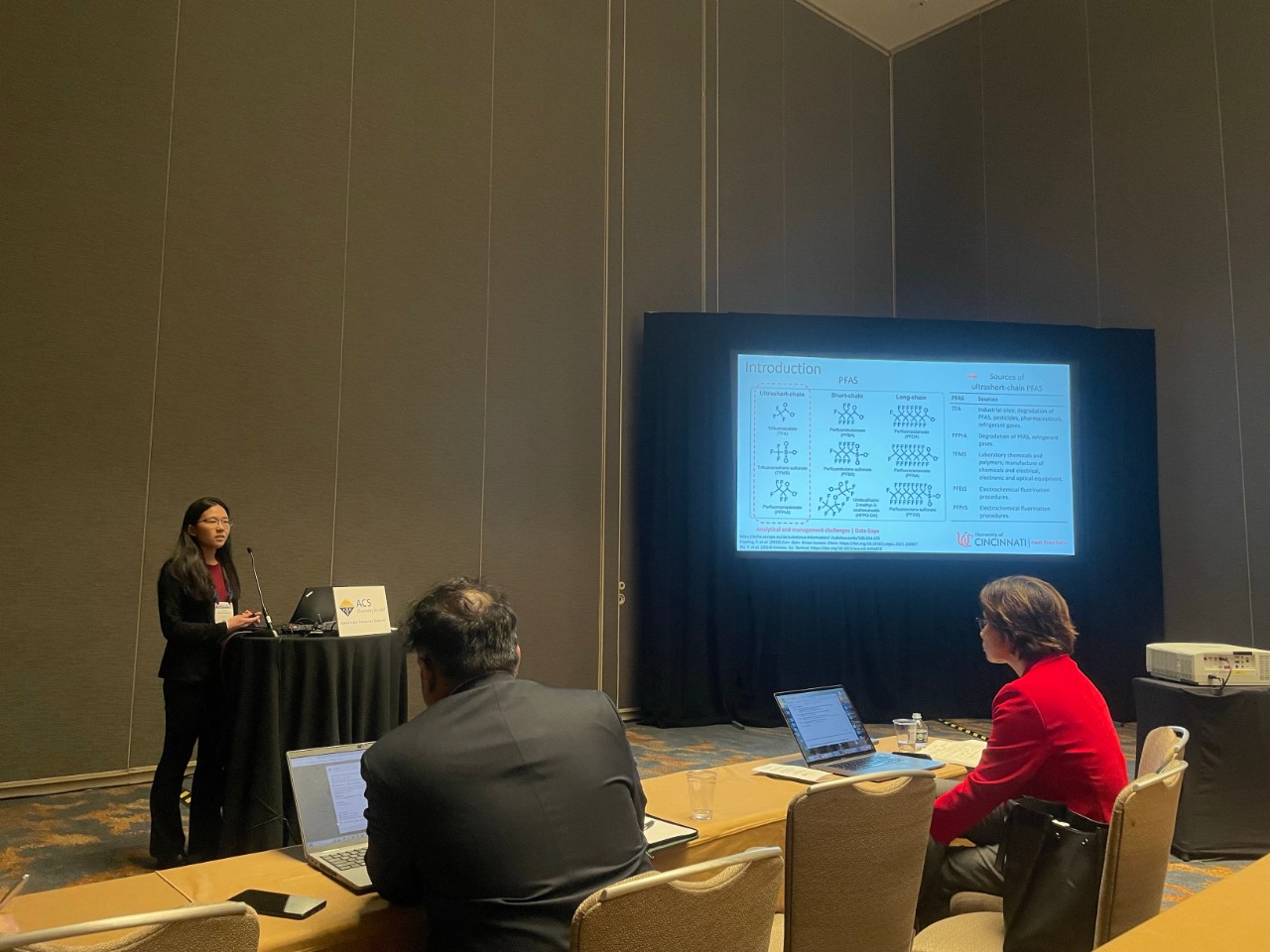
Environmental engineer studying Ohio River pollution
Karen Noda Morishita is using analytic chemistry to quantify organic contaminants
Growing up in Brazil, Karen Noda Morishita witnessed the impacts of pollution in nearby creeks and rivers. As an undergraduate and graduate student, she remained passionate about the possibility of impacting the environment.
Now, in her environmental engineering doctoral program at the University of Cincinnati, she is contributing to important work on per- and polyfluoroalkyl substances to better understand how to improve the environment.
Recently, she was named Graduate Student Engineer of the Month by the College of Engineering and Applied Science.
Why did you choose UC?

Karen Noda Morishita is pursuing a PhD in environmental engineering. Photo/provided.
My long-term career goal is to continue doing research in academia. As a Brazilian and having both my undergraduate and master's degrees from Brazil, I understood it was the time to take a step toward internationalization. The University of Cincinnati stood out to me as a great option for my PhD. In just a year at UC, I cannot express how much I have already learned and how grateful I am for the researchers from all around the world that I've been able to work with. Dr. Xi-Zhi Niu, my adviser, also played a big role in my decision to choose UC. Not only does he have a lot of knowledge and experience in my field of interest, he also offered me the opportunity to work with a trending topic in the field: per- and polyfluoroalkyl substances, known as "forever chemicals." A bonus of coming to UC was discovering the city. I did not know much about Cincinnati before, and it turns out that I love it.
Why did you choose your field of study?
There are three main reasons why I chose my field of study. First, seeking the improvement of the environment as my job aligns with my personal values and sense of purpose. Second, my interest in the anthropogenic impacts in the environment had grown over the years, as I grew up in Southeast Brazil where we clearly see how rivers and creeks are affected by pollution. This has always triggered in me the need to do something about it. Third, the base for my PhD project, analytical chemistry, has been of interest to me since my undergraduate studies. I got my Master’s in analytical chemistry, spent three years in industry in the field, and wanted to continue exploring it.
Can you describe your research?

Karen Noda Morishita is working on quantifying organic contaminants in water sources including the Ohio River Basin. Photo/Provided
The projects I am working on involve the development of analytical methods to quantify organic contaminants, such as PFAS, then describing their occurrence in water and sediment samples of the Ohio River basin.
I hope to help the scientific community by generating knowledge where there are still scientific gaps, including developing methods capable of quantifying molecules that are difficult to analyze and obtaining previously unknown concentration of contaminants in the environment.
My biggest motivation is being able to contribute to the process of protecting humans and the environment. It may not be obvious but having a method to accurately measure the substances is vital to ensure the values obtained are the true values. Sometimes I feel like I am working behind the scenes, but I know that the method I am working on will later benefit toxicity, treatment, and other occurrence studies.
What are a few of your accomplishments of which you are most proud?
As a second year PhD student, I am proud of the work I have done with my adviser and my peers. Together we have published a paper, I presented a poster at the Second Annual Interdisciplinary Water Symposium, and I gave my first oral presentation at the American Chemical Society conference early this year. One of the things I have been enjoying the most during my PhD journey here at UC is the opportunity to practice my teaching skills. In my research group I train undergraduate students and new graduate students. As a Teaching Assistant, I am happy to help prepare the classes, teach undergraduate students to perform water quality analysis, evaluate laboratory reports, and assess project presentations.
What are your plans after earning your degree?
I expect to graduate in spring 2028. Afterward, I plan to continue in academia. I want to continue teaching and facilitating impactful research.
Do you have any hobbies?
I really enjoy traveling and exploring new places, reading, cooking and eating, hiking, staying active, and spending time with my friends. I just wish I had more than 24 hours in a day!
Featured image at top: Karen Noda Morishita is an environmental engineering PhD student at the University of Cincinnati. Photo/Provided
Related Stories
Broad co-opportunities
December 18, 2025
Sakura Adachi exemplifies the Bearcat spirit: she works hard, she gives back and she takes full advantage of the opportunities the University of Cincinnati offers.
UC medical students explore ChatGPT’s ability to support qualitative research
December 18, 2025
Newly published research in the journal Medical Science Educator highlights University of Cincinnati College of Medicine student-led work in medical education and examines how artificial intelligence can assist with qualitative research.
PhD student uses engineering to understand cardiovascular system
December 17, 2025
Drawn to the University of Cincinnati for the strong reputation in cardiovascular research and the connections with the UC Medical Center, Shrayesh Manegaonkar is pursuing a PhD in mechanical engineering at the College of Engineering and Applied Science. Recently, he was named Graduate Student Engineer of the Month for his work on biofluid mechanics, aiming to develop better diagnostic tools for cardiovascular diseases.
